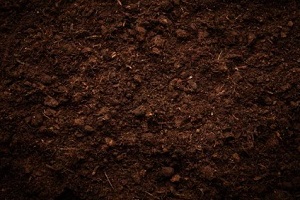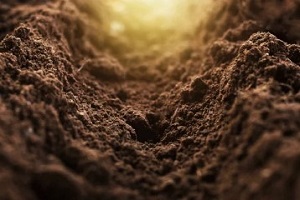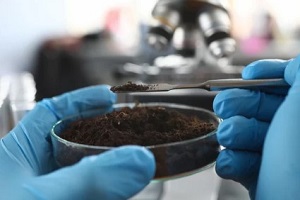 When it comes to desirable types of soil for gardens, two names you will often encounter are peat and loam. How do they foster growth, and what sets these two materials apart? Here is everything you need to know about these two valuable types of soil and their uses.
When it comes to desirable types of soil for gardens, two names you will often encounter are peat and loam. How do they foster growth, and what sets these two materials apart? Here is everything you need to know about these two valuable types of soil and their uses.
What Is Loam Soil?
Loam soil is a type of soil that has an optimal combination of components, making it an excellent growing medium for vegetable and flower gardens. It contains three components:
- Sand, which makes up 40 percent of the overall soil by volume
- Silt, which makes up another 40 percent of the overall soil by volume; and
- Clay, which makes up 20 percent of the overall soil by volume
There are also subgroups of loam that have a higher percentage of certain materials, such as sandy loam, clay loam, silty clay loam and silt loam.
Loam may be present naturally in some garden areas, but most native soils need some adjustment to reach the right composition. Loam soil can be made by mixing topsoil with organic matter to help it retain nutrients and moisture.
After testing soil to determine its pH level, organic matter, nutrients, and amendments such as fertilizer, organic matter and lime can be added to help it achieve better characteristics. Loam soil can also be purchased in bulk.
Why Is Loam Soil So Desirable?
Loam soil is prized by gardeners and farmers for the excellent results it yields when growing flowers, crops, grass, shrubs and trees. It allows air to circulate around the roots of the plants, protecting them against diseases.
It is excellent at holding nutrients and boasts the ideal texture for retaining water across an extended period so the roots of plants can access it. It also drains well, which means water will eventually seep away from the plant so its roots do not sit in the water and begin to rot.
What Is Peat Soil?
 Peat soil is a type of soil that consists of decomposed organic materials such as sphagnum moss that have formed over a period of thousands of years. Its high percentage of organic matter from plant materials gives it its unique characteristics.
Peat soil is a type of soil that consists of decomposed organic materials such as sphagnum moss that have formed over a period of thousands of years. Its high percentage of organic matter from plant materials gives it its unique characteristics.
This type of soil naturally accumulates in wetlands ecosystems known as peat bogs. They can be found in Southeast Asia, Scotland, the Amazon Basin and Russia. Experts believe that as permafrost melts, more peat deposits will likely be discovered in the Northern Hemisphere. Most of the peat soil used in the U.S. originates from peat bogs in Canada.
It is interesting to note that peat soil also possesses archeological value. In fact, researchers have found remarkably well-preserved remains in Scottish peatland, including individuals who perished more than 3,000 years ago.
What Makes Peat Soil So Desirable?
Pete soil is often used as a soil amendment on account of its ability to prevent compaction. This increases the aeration in a soil mix and gives the roots of the plant plenty of room to breathe. It is also a good choice for starting seeds because it rarely contains damaging microorganisms such as bacteria and weed seeds. Untreated compost, in contrast, is vulnerable to these issues.
Another beneficial characteristic of peat soil is its ability to retain moisture. It is the organic materials found within the soil that help lock moisture in, which means it is a helpful amendment for sandy soils. In addition, the acidity of peat soil makes it a good choice for improving alkaline soils for growing plants that enjoy higher acidity levels, such as azaleas and blueberries.
However, there is one big downside to peat soil: it is a nonrenewable and unsustainable resource. As environmental concerns and consciousness grow, peat soil is falling out of favor because harvesting it releases greenhouse gas emissions such as methane and carbon dioxide into the air, thereby contributing to climate change.
For this reason, many gardeners prefer more environmentally friendly amendments such as organic mulch, coco coir or compost.
Peat Moss vs Peat Soil
Peat is formed via the gradual decomposition of organic matter in a waterlogged environment over periods of thousands of years. When the organic matter in question is chiefly sphagnum moss, the product that results is known as peat moss.
This is not the same thing as peat soil, which is topsoil that has been combined with peat. It may predominantly contain moss, or it could have originated from a different type of plant.
How to Tell Which Type of Soil You Have
 One of the most common tests you can conduct on your own to determine the type of soil you are working with is the hand test.
One of the most common tests you can conduct on your own to determine the type of soil you are working with is the hand test.
Simply dig four to six inches into the soil in question and scoop out a ball of soil with your hand. Then, squeeze it. If it forms a loose ball when you squeeze it, it is likely loam. If it feels spongy, the soil is most likely peat.
The color of the soil can also provide some clues. Loamy soil tends to be light brown, while peat soil is a darker brown and sometimes may even be black.
Another clue is the moisture of the soil. While this depends to some extent on the weather conditions, peat soil’s tendency to retain water means that it often feels wet or waterlogged even if it has not recently rained. Loam soil, in contrast, may feel slightly moist but does not usually feel soggy.
One way to know for certain if you have peat or loam is by collecting a few cups of soil from different spots in your yard, placing them in a plastic bag and sending them to your area’s Cooperative Extension service office. These offices test soil to determine its nutrient content and pH level. Peat soil tends to be quite acidic, while loam is less acidic.
Set Up a Soil Delivery with Dirt Connections
If you are looking for the best soil for your gardening project, the experts at Dirt Connections can help you obtain the perfect mix to achieve your aims. Contact us today to discuss your project, and we’ll develop a custom mix that can be delivered throughout the Northern Virginia area.
Summary

Dirt Connections was started with one goal in mind: providing quality residential and commercial construction services to clients on time and on budget. Reach out for more information on how we can support your next project.
For your convenience our estimates are free and by appointment. Call 703-940-9949 for a free estimate today!









































